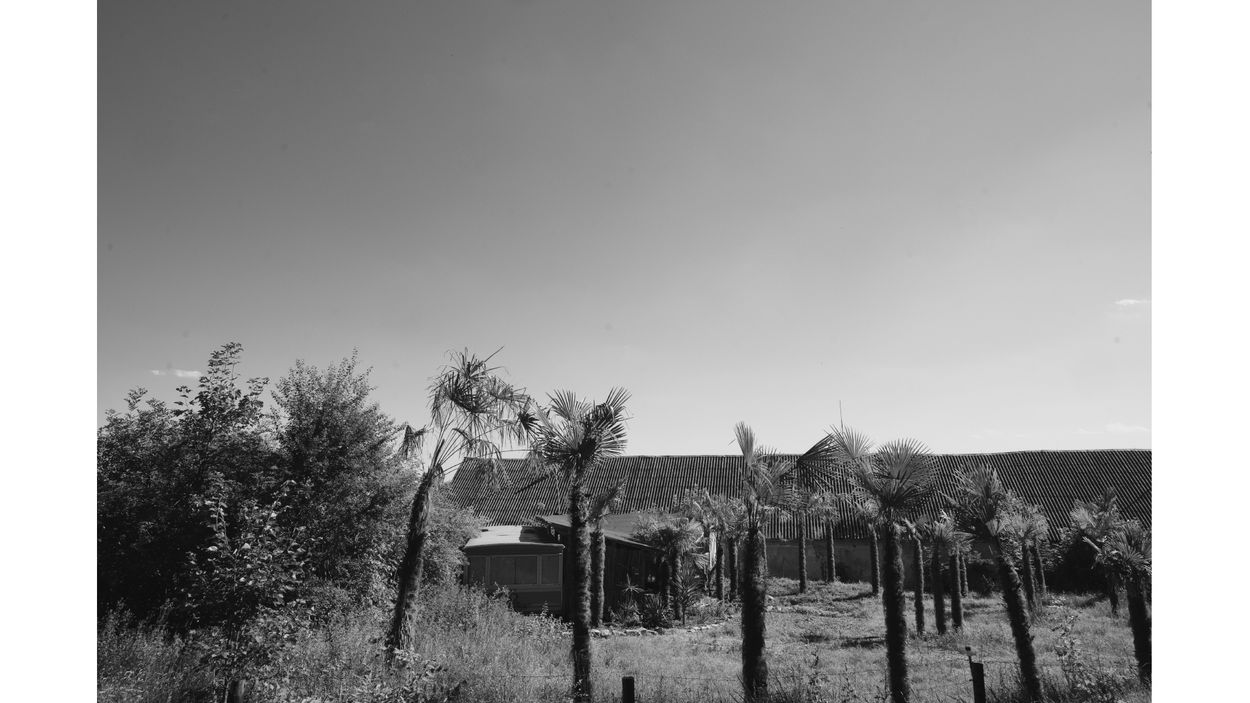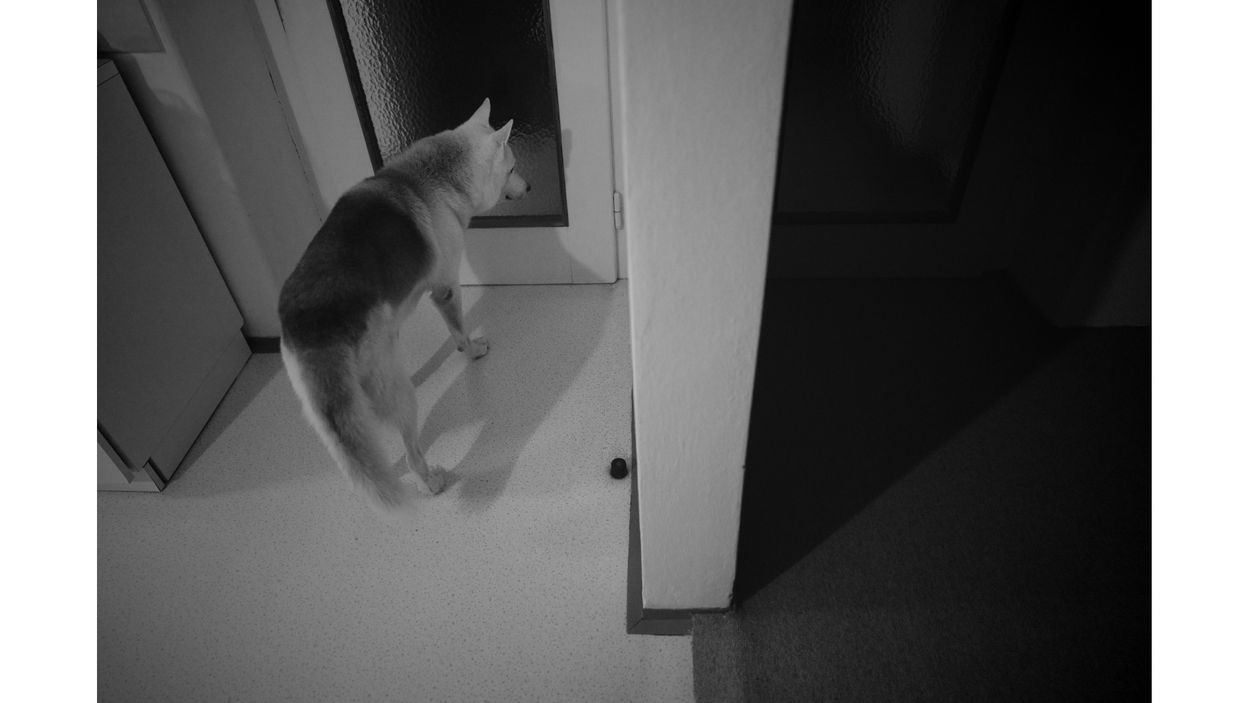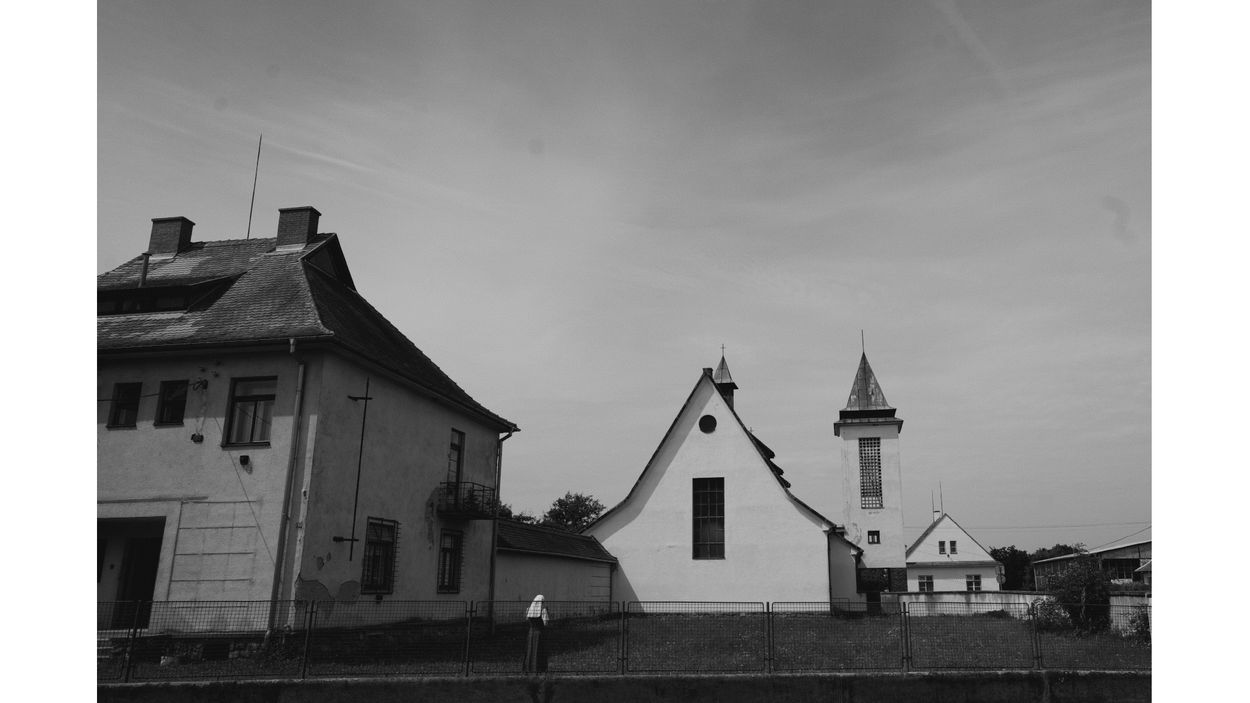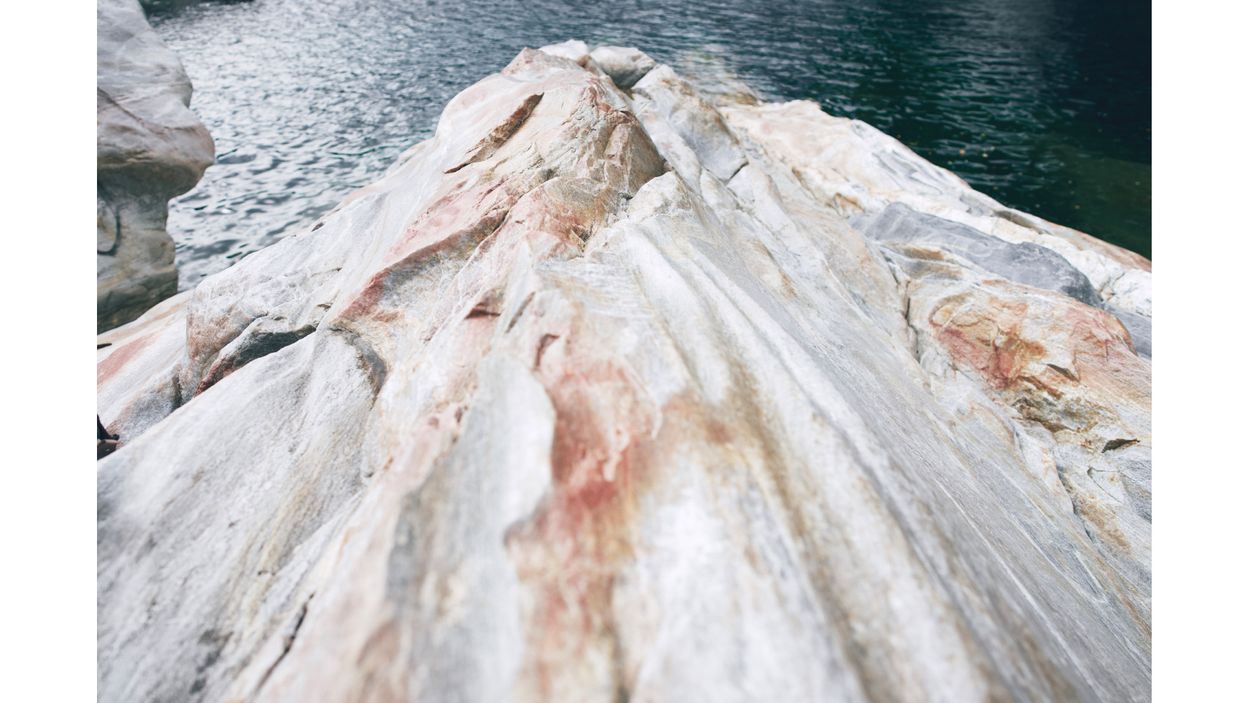Tegna
By Linda Keršnerová


Linda Keršnerová lives in Prague. She currently dedicates her time to her law practice, while occasionally allowing herself to be sidetracked by hobby film criticism, which she started with at an independent online magazine and has since continued at different platforms, covering mostly nearby film festivals.
Last year after Locarno, I moved into a dark, ground floor, paved-courtyard-view apartment on my own. I spent the lockdown here, shamelessly watching reality TV in thick socks and eating contactless delivery. We are all friends here, so there’s no need to keep up pretences. On a free night, I don’t reach into a daily dusted collection of Pasolinis to have a good time. Not in a pandemic and not ever. In other words, everyone knows I have nothing to offer about films besides opinions.
Since I was spending so much time in this hole and since the world was ending, things like getting one’s deposit back ceased to have meaning and I decided to cover my kitchen cabinets with black wallpaper. I put three things on the resulting makeshift blackboard: the date I completed the feat, a bad drawing of my friend’s dog and a photograph of my feet against the river rock mass in Tegna.
Tegna is a small town right next to Locarno. You take a bus to get there. You climb down past some warning signs and you find yourself at the river. I spent an extra day in Locarno to go to Tegna. I paid to push my flight back a day and dragged all my luggage from the hostel we had been provided to a bunk bed I booked just above Pardo Bar. I watched no movies that extra day. I basically just went to Tegna to take that picture of my feet.

A year later, I am tasked and allowed to—what? Replay? Remember? Reminiscence? All against the backdrop of Lucrecia Martel’s films, which somebody once described to me as all kind of being about desolate rich people hanging around pools. So yes, I get the connection—both to Locarno and to my carefully cosseted depression, brought about despite, or precisely because of, the general abundance most of us enjoy in this split-second before everything ends.
Circling back to me glaringly lacking the necessary background to produce any sort of truly educated composition on film, I come back to my favourite piece of work that I had the opportunity to create in Locarno—a set of black and white photographs telling the story of what happens in the moments that one is, like I maybe too often was, taking the back alleys instead of immersing in the actual festival affairs.
In Locarno, I shot the blank screen at the Piazza Grande at midday when nothing was on. I shot a kid in Mono Bar watching the Minions. I shot the rain dripping down the huge vinyl billboard display of the Pardo in the accreditation centre during one of the many storms. In a rare moment of blatant romanticism, I even captured the lake, fog and mountains melt into one another (yes, that picture, the one that everyone takes).
So I decided that if I was going back, I had to produce another collection of images. They were going to be inspired by the four of Martel’s features and accompanied by my notes on them. That would be new, but the rest would be the same. They had to be black and white, a bit childish, very emo and, I hoped, subtle. Accidental similarities. Loose links. Something just around the corner from the actual thing. Nothing more, but nothing less.
To do this, I endured an endless coach ride to visit a friend in her childhood home close to the border with Austria. We took long walks, watered her parents’ vegetable garden and bathed the dog. Sure enough, the first trip we take, I stumble on what could well be an Eastern-European take on the Zama set, as I peek over the fence of a run-down holiday resort. I see a young nun in a spotless white headscarf standing in the middle of the parish garden in what looks like prayer, but turns out to be her texting on her phone. Later, when the cat comes in, the dog stands motionless at the door to the hallway, the mirroring entrance to the living room obscured with the light turned off. The sun shines on some chairs in my friend’s kitchen. Nothing more, but nothing less.
***
ZAMA

“It has everything!” I exclaim at lunch. “The only characters that make any kind of rational observations are women. All the men are idiots.” Of course, what a cheap comment to make about a period adaptation. A TikTok-era shortcut around the piles of context I did not care to acquire prior to (or after) watching. Once again I allow myself, with this film and others, to treat it as entertainment (and/or art), not cinematic treatise. I indulge. This whole men-being-useless thing, I chuckle to myself. What a damn treat.
First impressions often turn out fitting. Whichever way I look at it, Zama is a collection of one liners and visual gags. Mostly tragic, of course, as life is a tragedy. An aging public official, some kind of colonial prosecutor in a land of intense heat, various dangers and few pleasures, desperate to be transferred elsewhere, receives bad news as a llama struts around the shot. Some family comes complaining they killed all the indigenous people and now no one is left to work. An expedition to catch a vile criminal returns a great result as the only capable person in the group turns out to be the wanted man. Easily my favourite.
I read up on the background of the story a bit and the mention of what in my language we poetically call the “twilight” of the 18th century (when Zama is set) and Dostoyevsky inspirations trigger a memory of making notes about Goethe’s The Sorrows of Young Werther, which was a compulsory read at my school. Except we don’t call it “Sorrows”, but rather “Suffering”, which has much more of an ironic vibe to it.
Werther falls in love with Lotta but it doesn’t work out. He shoots himself in the head to die honourably and end it at once, but doesn’t quite get it right and dies a convulsing wheezing mess many hours later while Lotta’s husband looks on. At its time, the novel reportedly started a craze. Merch inspired by the story was sold and young people wore coats modelled after Werther. An entirely millennial response, just like my Zama impressions. And all I thought when I read the text, presented as a tale of fatal love, was: Werther literally had one job. Martel’s Diego Zama seems to me equally ridiculous.
Unlike Werther though, Zama steps out of the ring of helplessness to grasp, understand and deliver a straightforward truth. A bold choice for almost the last line in a movie filled with ambience, walls of sound and people engaging scene after scene in more or less completely insignificant, absurd dialogue. “I am doing for you what nobody did for me,” Zama says to the group of men about to cut off his hands and tell him that, if he sticks ‘em in sand, he won’t bleed and might live. “Saying no to your hopes.”
THE HEADLESS WOMAN

I had to take ten extra driving lessons for my instructor to feel like there was even remotely a chance I could take the exam and not wreck the car. Me taking driving lessons was an act of desperation: I was very young and had just been told by a boyfriend he was breaking up with me because of, among other things, my fear of motor vehicles. Back then, I thought proving myself to a man was a thing; it’s not. I remember being taken to a highway and feeling like a gun was pressed to my temple while simultaneously being pointed at everyone else. I passed the test, cried, got my licence (which I use when I go out drinking and don’t want to lose my other ID—a bigger pain to replace), and I haven’t driven since.
The Headless Woman, to me, reads like an inverted psycho-thriller detective story, compromising none of the qualities such films rarely display. I wonder why I struggle to think and write any more. Was I too uncomfortable watching the tale of Schrödinger’s accident unfold, or on the contrary, did I feel like it was almost too approachable, as if here, yes, I was still in on the joke, but so was everybody else as well?
With the initial desolate rich people comment still in my mind, it is with this movie that I notice it might just be true that water really is a recurring theme in Martel. It does in fact seem to be ever present, in such form or another. Clean, filthy, wild, contained. In The Headless Woman, the pool is buried under the garden, a thin layer of earth covering the cold blue tiling. The flowers grown, but their roots touch the concrete edge of the basin. The storm fills the canal by the road, but the boy’s body blocks the runoff.
THE SWAMP (LA CIÉNAGA)

The pool of course plays the most symbolic role in The Swamp (La ciénaga), which is literally about desolate rich people hanging around it. It is also a prime example of many things that make Lucrecia Martel’s work exceptional and unforgettable: it’s crowded, allegorical, ambiguous, unwitting and fatal at the same time. For some reason, it was this film that made me think I’ve never seen a movie with so many women in it. My awe of this idea went so far that I ended up thinking the main character, a dreadful drunk, was really a caricature of a man, rather than a mother of can’t-count-how-many-because-everyone-here-is-a-cousin.
The village my friend comes from and took me to so I had some space to write was founded on a hill overlooking a dam built in the early 1930s. When the dam swallowed the old village (not entirely: the cemetery, set a few tens of metres higher than the houses in the valley, made it), people were given a choice of compensation or resettlement, and overwhelmingly chose the latter. The resulting “new” village was then built over a short couple of years according to precise plans, which involved a few types of residences—more or less identical houses for lacklands, bigger ones for landholders, the ones near the square for merchants and some more for artisans.
I didn’t know this prior to visiting, so driving past one house after the other that were exactly the same gave me an unsettling feeling, like being in one of those “doom towns” the Americans built to test for nuke blasts in the 1950s. But most of all, I wondered what the old locals must have thought when they got the finished product: community, as imagined by an outsider and commissioned by the government. When they lost homes, and got buildings. As if that was the same thing, where they are clearly opposites. The sterile white new village a constant reminder of the memories covered in sediment on the bottom of the rising lake.
In The Swamp, the pool, once perhaps a token of relative wealth and a place of fun, love and refreshment, turns into a foul-smelling slough. Just like the shooting of a cow stuck in mud goes from an act of pity to a cruel exercise in a matter of moments, multiple telephones stuffed into every room around the house cease to be communication devices and instead become an ever-ringing source of annoyance and distance, and innocent children’s games cost somebody an eye, somebody their dignity and somebody, ultimately, their life.
What I enjoyed the most about The Swamp was that the whole film everyone kept following this story of a Virgin Mary apparition broadcast relentlessly on TV. A real miracle, a revelation, deliverance from the alternating lethargy and conflict, the boredom and a longing for permanence and peace when the world is shaken like a box of cockroaches. Cheap but profound, universally captivating. Having a weak spot for powerful lines, I couldn’t help but notice that Martel’s debut has a final line almost as devastating as the verdict Zama returns in the much later period drama adaptation: in the last scene, when asked where she went, Momi says she went to the place where the Virgin has been appearing. And didn’t see anything.
THE HOLY GIRL

When I talk to people after leaving the cinema, having seen something together, I am often confident we watched entirely different films. When I’m on my own, the same feeling is substituted by reading the distributors’ descriptions, often even highlighted by some terrible, misleading translation of the title. Anyway, whether the distributor agrees or not, in The Holy Girl, teenage Amalia starts stalking the middle aged doctor Jano after he gropes her in a crowd not to save him from an extramarital affair with her mother, but simply to turn the act of violence into one of love; to accept the hurt as a sign and demonstration of God’s infinite grace instead of having to carry it as a trauma inflicted by one of the thousands of balding creeps who are unable to stop themselves from being fucking disgusting.
I’m almost ready to sleep when I remember when I have seen this connection of God and sex before. Just like with Goethe’s Werther, it must have been years ago at school when I jotted down these notes from the teacher’s lesson: nun, intimate poetry—loved God as if God was a man. I can’t remember the name, and when I take to Google search, it unsurprisingly returns nothing useful other than a poem by Jan Neruda, a Czech poet of the second half of the 19th century, about a nun so crazy with loneliness that she kisses the cold marble of a statue of the Virgin Mary and famously cries: “You were allowed to love God himself / allow me to at least love a man!” Which, I admit, is a pretty close hit.
When The Holy Girl came out, I was 13, certainly wouldn’t be allowed to watch it and even if I did, I most likely would understand none of it, just like I did not comprehend the idea of a cloistress writing borderline erotic poetry to the Lord. (It took me two days to remember this, but it was Saint Teresa of Ávila, the 16th century religious figure, who apparently really did call God her “sweet love” in her writings and got inspiration from hallucinations of insufferable pain she considered ecstasy).
Watching the film now in my late 20s, I am of course impressed by it and somehow more tuned to the theme of searching for a spiritual calling while gaining (and at times having to fight for) command over my own body. That’s why I get so mad about the distributor’s text, which seems to pit Amalia against her mother. When, in reality, she’s taking on someone—something—else: damnation itself.
***
Discussing Lucrecia Martel, what comes up the most beside her personal fierceness and general badassery is her busy-composition visual style, her directing actors to natural perfection and her exquisite sound design. More could and perhaps should be said than what I have disclosed. About the role social status plays in her films. And morals, or lack thereof. About how most of her feature-length work is made up of what is actually a semi-autobiographical trilogy, something I rudely ignored when I broke up the order the movies were shot in, here and in my viewing. About feminism. About her shorts. But even if I set out to encompass that instead of a few short musings, would that change anything—certainly nothing for the world of cinema or criticism, but for me?
When I came to Locarno one year ago, I didn’t know, but sensed, that it was going to be the last few days of peace and carelessness for a long time. Being on the far end of the amateur spectrum in the Academy, maybe I was less burdened by any expectations and strive for full professionalism, which for me is liberatingly unachievable.
What I’m therefore allowed to replay, remember and reminiscence about in connection to Locarno, has nothing to do with cinema. It is trying to climb on the concrete structure just off the edge of the lake, failing and scraping the skin on my ribs ever so slightly, creating an unflattering scab I couldn’t stop myself from picking at weeks later, when work and personal troubles came to overshadow the memory. Getting off the bus from Base Camp too soon and almost having to walk the whole way back to the hostel. Taking my shoes off when it rained because it made no sense to wear them in the storm. And the thing just around the corner from the actual thing: Tegna.
